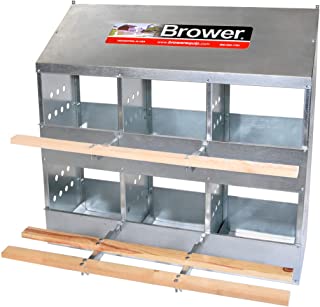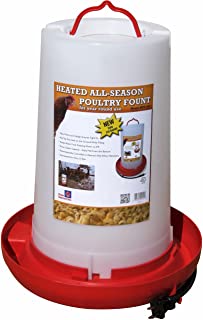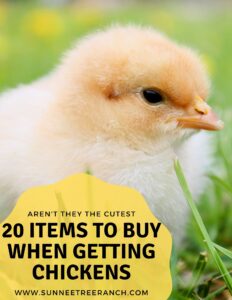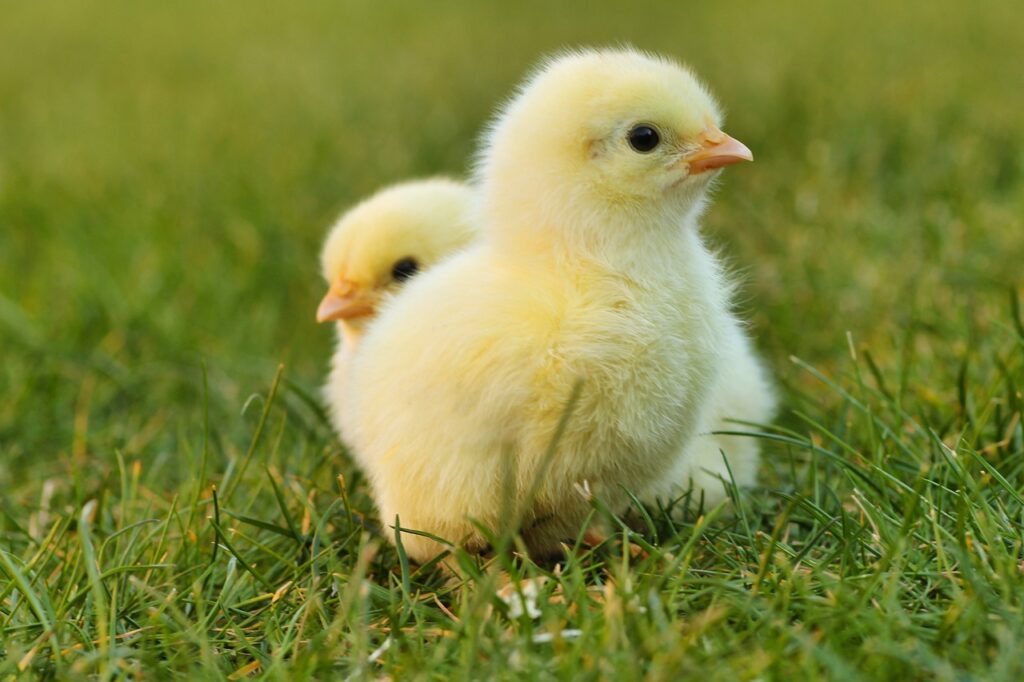I have decided to Get some chickens, What Items Do I need?
- I am so glad you decided to buy some chickens. They’re so much fun to have around. Chickens are on of my favorite pets, and I have had all kinds of pets. Chickens are so cute and funny and easy to have around. I love when they are kicking their feet in the dirt, I have no idea why but I find it to be so cute. I also love when you look up and they are perched on the most random things. They are so sweet and fun to play with too.
- Now that you have made the decision we will help you to know all the things we would recommend getting for your chickens to make life better for them and you!
This article has some affiliate links. If you choose to click on them and make a purchase, at no additional cost to you, I will make a small commission
What to get if you start with those super cute baby chicks!
- House – You will need some sort of container or small building or enclosure to hold your babies. We used a box one and then a small animal cage as they got bigger. We got ours when they were about about 9 weeks oldish. What ever home you choose to use, you will just need something that will keep drafts out and will keep the chicks protected and secure..
- Bedding – They need something on the floor beneath them. We would recommend, pine shavings work best. They are cheap, easy for the chicks to kick around, and do a good job of soaking up droppings and any water that escapes the waterer. Aspen shavings work great too. Don’t use plain newspaper for chicks, as they may develop a condition called spraddle legs because the newspaper is too slippery for them.

- Heat Lamp – If you are bringing your chicks from the feed store or getting them in the mail, it will be your job to keep them warm enough. You need a heat lamp (250 watt). Situate the heat lamp above the chicks, away from anything flammable. Soon after hatching, temperature for the chicks should be 95 degrees Fahrenheit and should decrease by 5 degrees per week until the chicks are fully feathered. You may want to have the heat lamp off to the side or on one end of the chicks’ housing so that they can move closer or further away (this is what we do), depending on how warm they are. You don’t want the chicks to get cold, but you also don’t want to cook them! I have not stressed about keeping the exact recommended temperature and just had our heat lamp to the side and let the chicks decide where they are most comfortable. If they are huddled together at the warmest spot in their home, that is a sign that they are cold and need the lamp lowered a bit and vice versa.

- Food – Feeding chicks is easy with the feeders that screw onto a standard mason jar. Simply fill the jar with food, screw the lid on, flip over and give it to the chicks. As the chicks get older and eat more, be sure to check the food level periodically and refill as needed

- Water – The classic mason-jar waterer will work just fine as the first waterer for your chicks. Larger versions are available for bigger birds or largerbroods. I like to set the water dish on top of flat and sturdy something along those lines to raise it above the level of the floor and have less risk of contamination or spill. I do not recommend using a trough or other open water dish, as the chicks will go into it and get wet, chilled, and quite possibly die.

- The actual food and water – Chick starter can be purchased at the feed store(medicated or not is your choice); water should be clean. Food and water dishes should be cleaned periodically to prevent disease.

For the Fun adult chickens
- Once your chicks have grown to an age, size and maturity that they have their adult feathers and can generally keep warm on their own, you can move them out to their permanent residence.
A good best place to house Your chickens will Have the following:
- The Super Cute Chicken Coop – A safe chicken coop is one that will keep the chickens protected from the weather like the cold wind, and from predators. Make sure there is a place for the chickens to get out of the winter blizzards, as well as a place for them to cool off in the heat of summer. Don’t ut more chickens in it then it’s meant to have. Pay attention to the guidelines given with most chicken coop plans or pre-made purchased kits and do what they say. The more space per bird, the happier the chickens. They need to be able to easily move around. Make sure your chicken coop is secure and that predators (including owls and hawks) and rodents cannot get in. Rodents will spread disease, eat the food and create more of a mess in your coop. Predators can be very sneaky and reach through standard chicken wire and kill your birds. Use hardware cloth or solid wood or metal to build your coop or when repurposing an old building into a coop.
- The Run/Play Area – It is totally fine to let your chicken run free every day BUT ONLY IF YOUR HOME. When you leave, you want to make sure your chickens will be safe from predators. You don’t want your chickens locked in that coop all day, so it is good to have a safe enclosed space that they can run around in during the day when you’re not home. Ideally, the run should be completely enclosed to keep out all predators. Snow fence is a fairly inexpensive deterrent to hawks and can be fairly easily tied across fences to keep predatory birds out and give the chickens some shade cover
- Nest Boxes For Laying Eggs – When your chickens start laying eggs, you will need a place for them to lay. It is good to encourage a special place for them to lay, to help prevent accidentally stepping on eggs on the floor of the coop or outside the coop, Just make sure its easy for you to get to and maybe one with a pull out floor so you can clean it like once a month. You can purchase nest boxes, build them from most any material (wood being the most obvious, but 5 gallon buckets on their sides also may come in handy), or use simple cardboard boxes and replace out as needed.

- Food Dish – You will want to have a good food dish that will allow all of your birds equal access to the food. This can be as simple as a purchased poultry feeder or you may want to create a sort of trough on your own to pour the food into each morning. Whatever you use, be sure to keep it clean so as to not spread disease. The kind I like is the kind like the pic below.
- Water Dish – Water dishes are one of the hardest things to keep clean in a chicken coop. Hanging water dishes are ideal, though they can be heavy to haul around if you have one that’s more than a gallon or two. You may instead wish to use a simple heavy saucer that will not tip if a chicken stands on the edge to drink. This will need to be dumped, cleaned, and filled each day (I don’t love these kinds). Hanging waterers are not ideal if your water freezes, while the saucer type you can take outside and flip upside-down and pour hot water to get the ice block to come out and then easily refill. I personally like the kind that can be mounted or hung BUT I also like it to have a heating ability for our winters so the water won’t freeze.

- Food and Water – In most climates in the U.S., you will need to at least supplement your chickens’ diets with chicken food, even if you are free ranging them. Wintertime does not allow for much to forage from. You can purchase chicken feed for your chickens from the feed store or figure out how to make your own (the information is out there) or how to otherwise ensure that your chickens have enough to eat. If you are keeping your chickens for the benefit of their eggs, you should get a feed formulated for egg-layers. For chickens you are raising for meat, use the proper food for best results. Water is essential to life. Keep it simple BUT keep it clean. Just make sure the chickens have water available to them at all time, and that it is clean.

- Bedding – For the cleanliness of the coop, the health and well-being of the chickens, it’s a good idea to have some sort of bedding on the floor of your chicken coop and in the nest boxes. Straw is a good thing and fairly easily obtainable, as is sawdust. Add a little bit each day to give your chickens some entertainment and to help soak up moisture from droppings and the like and reduce odors. The droppings and manure will break down and help warm the coop in the winter (sort of like a “hot” compost pile), and can be taken out when you clean the coop in the springtime.

Additional Items you will May want now or down the road
- Supplements – Chickens should be getting a good varied diet including foraging outside in a reasonably protected area.
- Gritts – Known as dirt and rocks, grit is an important part of chicken digestion. Chickens will eat small rocks and pebbles to aid their gizzards in breaking down their food. Deprived of this simple thing, and they may start having digestive disorders. You don’t need to purchase special grit from a poultry supplier; you just need to provide access to some sort of little rocks for them to peck at now and then. Yep for real!
- Calcium – Calcium is very important, especially for egg laying hens. As a chicken gets older, she will lose much of the calcium in her body as she lays her eggs. It is important to help the chicken replenish her calcium stores in some way. You can either rinse off the egg shells laid by your chickens and grind them up in the blender and add it to the feed or in a little separate feeding container. Or, you can purchase oyster shell from the feed store for the hens to peck at and take when needed. Having this available may also help prevent egg pecking.
- Vitamins – These can come in handy if you have a bird that seems under the weather or if your flock seems to be struggling a bit with something lacking in their diet. One brand to look for is Quik Chik, a vitamin and electrolyte blend that is mixed in the chicken water.
- Light Winters – In the winter months, when the sun is not out nearly so much as in other times of the year, some hens will stop laying their eggs. To alleviate this, you can install a light and have it on a few additional hours a day to extend the amount of time the chickens get light and hopefully help them to begin laying again. Consider hooking the light up to a timer for your convenience, and be sure it is situated away from anything flammable and that your birds cannot get near enough to it to burn themselves.
- Heavy/Really Cold Winters – Another winter issue is with the chicken’s water freezing. You may want to consider installing a little water heater under the chicken waterer to prevent the water from freezing. Alternatively, you may want to simply go out and switch water more often in winter. While many chickens will eat snow, many are also afraid to go out into the snow, and they can suffer dehydration and even death. Don’t rely on them eating the snow, as they are not known for how smart they are. I personally prefer a heater water holder, this has always worked great for us.

The Last Thing You Need to Know is have fun and love every minute with them
- Chickens are just so sweet and so fun. Good luck on your new adventure with your sweet chickens



